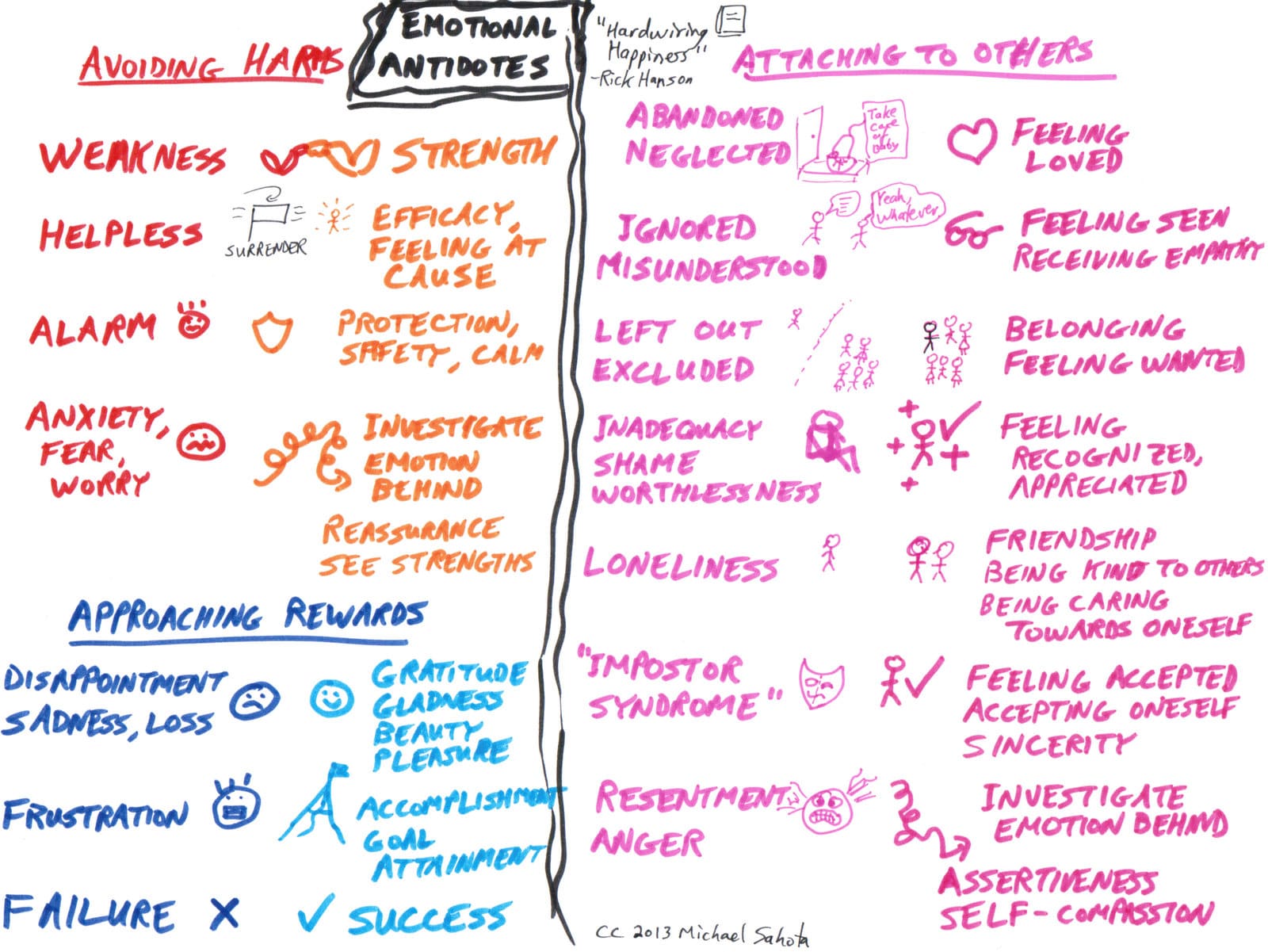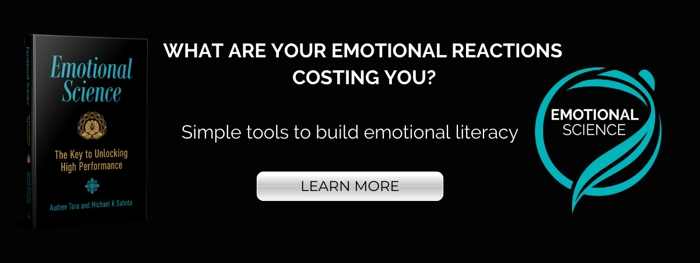In my last post, The Business Case for an Authentic Workplace, I talked about the economic value in seeing the whole person – including their emotions. But what do we do when people actually have emotions?
In this post, I present a model that helps identify our emotions and provides guidance on working with that emotion to reduce it’s impact. A model like this is helpful navigating a workplace where emotions are no longer hidden.
The model comes from Rick Hanson’s book Hardwiring Happiness. The New Brain Science of Contentment, Calm, and Confidence. Rick has used these concepts extensively and the book contains guided activities to connect with emotional antidotes.
My novel invention is the creation of the inforgraphic below that make the process easier to understand and use.
The Emotional Antidote Map
The basic idea is that every negative emotion has a positive emotion that is it’s antidote and will mitigate it.

We have three sub-systems in our neurology where emotions show up:
- Avoiding Harms
- Approaching Rewards
- Attaching to Others
For each sub-system, a negative emotion is listed on the left with it’s emotional antidote on the right. It’s called an antidote since it is the specific thing that will help with that negative emotion. For example, if one is feeling alarmed, then the antidotes would be feeling protected, safe and calm.
How to use this
Print out a copy of the map and post it somewhere nearby. Next time you are feeling unsettled:
- Use the map to identify the dominant negative emotion
- Acknowledge/accept the feeling
- Get a feeling of the antidote in your body (to mitigate the negative emotion)
Way to Feel an Antidote
There are several options for bringing the antidote into awareness and fully feeling it in your body (to mitigate the negative emotion):
- Remember a past experience.
- Imagine an experience.
- Ask your higher power or connect with your sense of spirituality.
Once you have practiced on yourself, you may wish to share this with others. Remember the caution from airplane safety procedures: “Take care of yourself first, before assisting another passenger.”

More Resources Don’t help – Only the Right Ones
Only specific antidotes help specific negative emotions. For example, if someone is experiencing failure (rewards subsystem), helping them connect with feelings of safety (avoiding harms subsystem) will not help.
Experience with this Method
I have been using this model for a couple of months and have found it very valuable for helping people identify what emotional challenge they are facing.
I have used it extensively on myself, with colleagues and in a meetup group on authentic connection.
One common observation is that a pervasive negative emotional is often linked to a pattern of ignoring the relevant antidotes. To illustrate with myself, a consistent pattern of dismissing recognition and appreciation fueled a sense of inadequacy and worthlessness. For sure I craved recognition and sought it, but when it showed up I would minimize or discount it. I would say things like “It wasn’t just me – I had help.” “Anyone could have done it.” With my new awareness around this, I now take a 5 to 10 seconds to let recognition be fully felt and registered in my body. It feels good.


